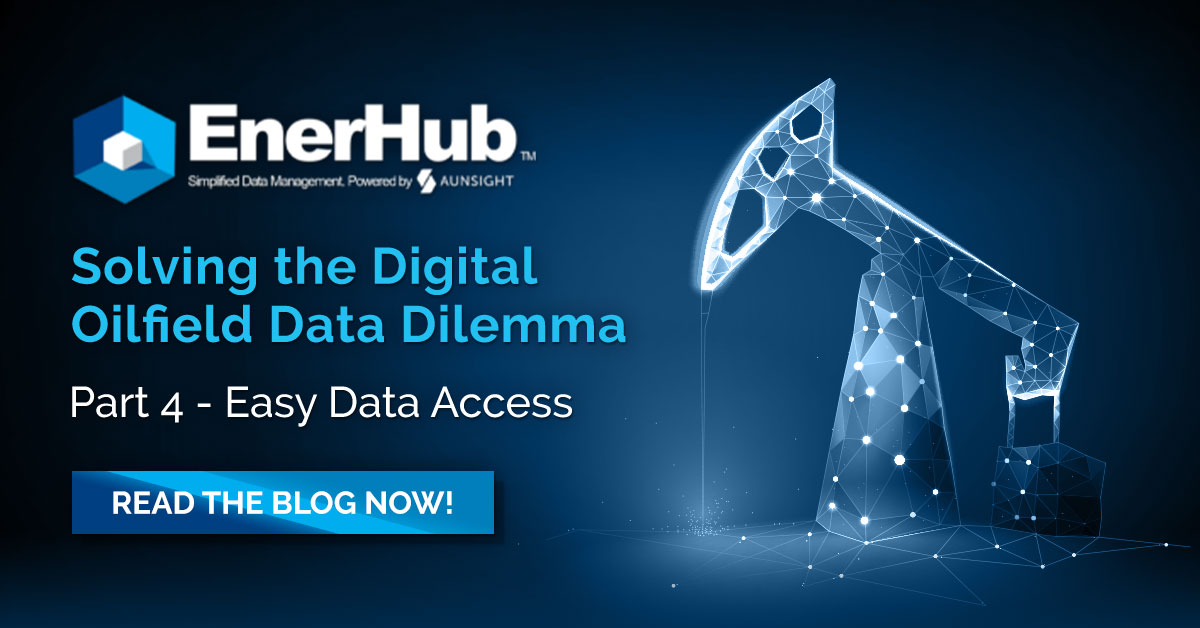Every day, energy professionals sit down to perform complex analysis in support of drilling and completions, acreage reporting, production optimization, capital planning, ESG/emissions reduction, and the list goes on. Consider a drilling engineer who wants to perform multivariate spacing analysis on Bakken wells in Spotfire, Tableau, or PowerBI. But before any of this exciting work can take place, the engineer must first wrangle up the right datasets, coddle it, de-duplicate entries, fill in missing data, normalize, standardize offsets to use API-14, and collate into a file for loading. It can take days or even weeks to get to the analysis starting point.
Die hard data junkies are one thing, but energy professionals need to get out of the data management business so they can focus exclusively on the business of finding new reserves, extracting hydrocarbons from the subsurface, and optimizing production. I’ve explained how oil & gas teams can overcome their digital oilfield data dilemma in the last two blogs in my series on effective digital oilfield data management. This starts by virtually fracking your data to unlock the digital black gold trapped in data silos and layers of organizational ownership, then building a digital gathering system to bring scattered software project databases (think Kingdom, Aries, WellView, etc.), unstructured data (think well and land files), and multiple versions of the truth together. Leveraging 50+ pre-built connectors to common data sources, EnerLink (the integration layer of EnerHub) does just that.
The next step is master data management where the goal is to transform multiple versions of the truth, missing, incomplete, and bad data into Golden Records through data orchestration and automatically applied business rules (the job of EnerCore, EnerHub’s MDM and data governance layer). But EnerHub doesn’t stop at providing a high quality data lake that seamlessly brings disparate data sources together, which is where most MDM projects end and why data consumption remains a challenge across the energy enterprise.
Oil & gas teams need easy data access to a single, quality assured version of the truth. Through EnerHub’s data distribution and consumption layer, EnerAct, information consumers can efficiently access the data they need. This includes making data available across your application ecosystem via our bi-directional connectors (in WellView, Aries, etc.), pushing well files into SharePoint, or creating a curated view of D&C data so that engineers can plug analysis-ready data into a Spotfire well spacing study. Driving data consumption even further, EnerAct encompasses a suite of tools focused on turning data into information. EnerAct is the visible layer of EnerHub where that information becomes knowledge.
Flexibility is the key when it comes to solving your digital oilfield data dilemma. Your team needs flexible ways to connect to all of your structured and unstructured data sources, flexible business rules to ensure data integrity, and flexible ways to deliver data to systems and transform data into knowledge for the human factor to consume.
In the rapidly expanding digital oilfield those who can collect, harness, and wield data effectively have the advantage, whether that’s first mover advantage for an acquisition, asset optimization, or being a data-driven, low cost operator. Enterprise data management (and EnerHub) is for everyone, large midstream companies, and E&P startups. Importantly, data management is not a project. It is not something with an end but is instead a continuous process that yields continuous dividends in the form of better informed decisions across oil & gas workflows, driving productivity to new levels, uplifting margins, and helping organizations meet their ESG goals and ensure environmental stewardship. EnerHub lets you start small and scale big. Just imagine what improvements your team could drive if you just had a master well header and a reliable understanding of well status (and who owns changing it).
EnerHub is staying several steps ahead of data management bottlenecks to ensure the continuous flow of high quality data for today’s data-driven knowledge workers. This includes expanding into the internet of things (iOT) and SCADA, truly connecting the field and back office, and helping teams deliver on the promise of automation and machine learning. That’s the topic of my next and final post, so stay tuned and reach out with any questions.


